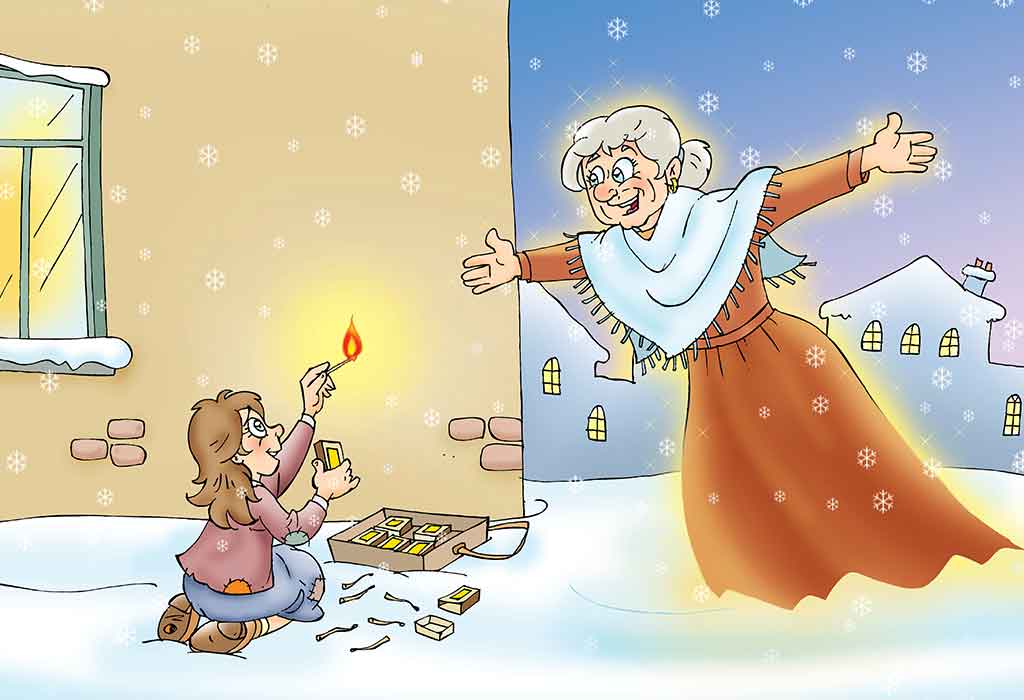
Written by Khoa Tran – Honor Class
Two short romanticism stories which are both about how desperate, pitiful, and trapped the main characters are hence showing us how happy they are when they get to escape their problems in the worst way: death. In the Little Match Girl, a girl has to go out every night to earn cash for her dad even it is the coldest one, which ended up dying for staying overnight outside the street. The other one, The Story of an Hour, is about a woman who has lived an unhappy marriage and passed away of being too happy about her husband’s death in a heart attack. They are different stories from different writers, but fortunately they do share the same theme of what’s trendy in terms of writing during the romantic century.
One of the ways that the writers use to portray a society in the romantic period is through the plot of the two stories. Both of the deaths of the two characters doesn’t seem sad for them at all even though death is arguably one of the most depressing things to exist. The girl eventually dies in happiness since she knows that she would get to meet her grandmother on heaven and escape the repetitive, painful, and depressing life that’s full of sorrow with her dad. The woman on the other hand dies of a heart attack due to being too happy knowing that now she gets to escape her unsuccessful marriage with the husband.
These details convey the idea that people in the Romantic period may look very sad, but actually are very happy inside and vice versa, hence showing an unpredictable society full of people who use emotions as a tool for communication and also was overused as a literary device. This is reinforced by the girl smiling when people finds her frozen to death in the morning.
The idea of people in the romantic period mainly use emotions as a way in writings, music, and everything else is also conveyed by the symbolism of the two stories. Even though both of them are about death, they are both about happy deaths. This symbolises how desperate the people’s lives were for some people in the romantic period as dying for them is the only way to escape. This implies that dying was a very popular solution for people who wants to change their lives instead of actually trying to find other solutions to live happier. The two stories symbolises the minds of people living in the romantic century: using their heart more than their mind; doing things based on their mood and thinking rather than what’s scientifically better.
Tone is also a way that the writers use in the stories in order to portray a romantic era for future readers hence increasing the effectiveness of the stories. The imagery of the grandmother is more important than the stove, goose, and Christmas tree conveys that in the romantic period relationships were actually more important for individuals rather than wealth. This is also shown in the other story since the woman is so happy when hearing that her husband passes away and the story mentions nothing about how wealthy the couples are. This conveys that people doesn’t think about their position in the society as much as about their relationships. Through the imagery to convey this message, the writers successfully show a good side of the romantic period that people don’t care much about how much they earn compare to their happiness in life, showing a very open society that people don’t often has to worry too much nor being sad about financial issues.
Moreover, diction is also a way that the writers choose in order to help the characters express themselves and furthermore emphasizes the mindset of people in the romantic era. In the Story of an Hour, there were a lot of descriptive vocabularies such as ‘fixed’, ‘gray’, ‘death.’ This shows us the typical way of writing stories in the romantic period, and hence implying that writers tend to focus more on the impression of both the readers and the characters more than the plot of the story. This is also reinforced by ‘strong, clear flame’ in The Little Match Girl, showing how important descriptive adjectives are in terms of expressing emotions for the characters, which is the most crucial part in a romanticism story.
Through plot, symbolism, tone, and diction, the writers successfully portrays clearly the society of the romantic era in the reader’s eyes. By effectively describing the girl’s harsh life granted by her father and the sophisticated description of the woman’s sorrow life, we can sense the typical ideas of romanticism inside these short stories whoever we are through the good uses of literary devices that the writers have used, hence establishing their own style of writing.